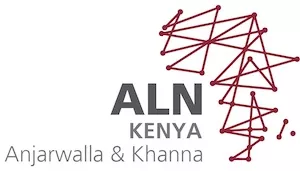- within Antitrust/Competition Law, Transport, Government and Public Sector topic(s)
- with readers working within the Healthcare industries
Family-owned businesses often face unique challenges when it comes to wealth extraction. Unlike traditional businesses where shareholders may not share personal ties, family enterprises involve owners across generations, each with differing financial needs, levels of involvement and perspectives. Striking a balance between the interests of active and non-active family members, while ensuring the sustainability of the business, is no small feat. We explore key wealth extraction strategies and practical considerations to help navigate this complex landscape.
Attractive Employment Packages
Family members working in the business can be compensated through
tailored employment packages, including salaries, benefits and
bonuses. It is crucial to align remuneration with merit rather than
entitlement to avoid perceptions of favouritism or overpayment.
Transparent and merit-based remuneration policies can be valuable
tools to prevent disputes and promote fairness.
Clearly defined employment policies ensure that compensation reflects contributions to the company, fostering harmony and professionalism within the family.
Dividends and Distributions
Dividends or profit distributions provide a direct method for
shareholders to derive financial benefits from the business. While
dividends can reward ownership, they may reduce funds available for
reinvestment and growth. To mitigate potential disruptions,
families should establish a clear dividend policy that aligns with
the company's operational and growth needs. Clear thresholds
for reinvestment to ensure the long-term sustainability of the
business should also be set.
Essentially, a structured approach to dividends ensures equitable treatment of shareholders while safeguarding the company's financial health.
Wealth Diversification for Non-Active
Members
Not all family members may wish to participate in the day-to-day
business operations. These individuals might prefer to diversify
their wealth through external investments. Families should engage
financial and tax advisers to develop balanced, tax-efficient
strategies. Families can also consider creating a family investment
office or similar structure to manage diversified assets
collectively depending on family requirements, needs and size.
External Sources of Finance
Leveraging external finance, such as debt or equity funding, offers
an additional avenue for creating liquidity.
When exploring these options, families should with the help of specialised tax and legal advisors assess the company's financial health and growth needs and evaluate the implications of losing control or decision-making power to external equity investors.
Shareholder Buyouts and Partial Exits
Family members seeking liquidity without participating in the
business can consider selling their shares, either to other family
members or external investors. Proper planning and valuation ensure
fair outcomes and minimise potential disputes.
Sharing in the Family Vision
Families should be encouraged to participate in liquidity and
liquidity discussions. Some key discussion points revolve around
whether the business should be preserved for future generations or
sold (partially or fully) to generate cash for the family. These
conversations are essential to ensure that financial needs are met
while preserving the long-term sustainability of the business.
Contributors
- Kajal Patel – Senior Associate
- Purity Wachira – Associate
- Stephen Deche – Associate
- Emmah Wakoli – Associate
The content of this article is intended to provide a general guide to the subject matter. Specialist advice should be sought about your specific circumstances.




